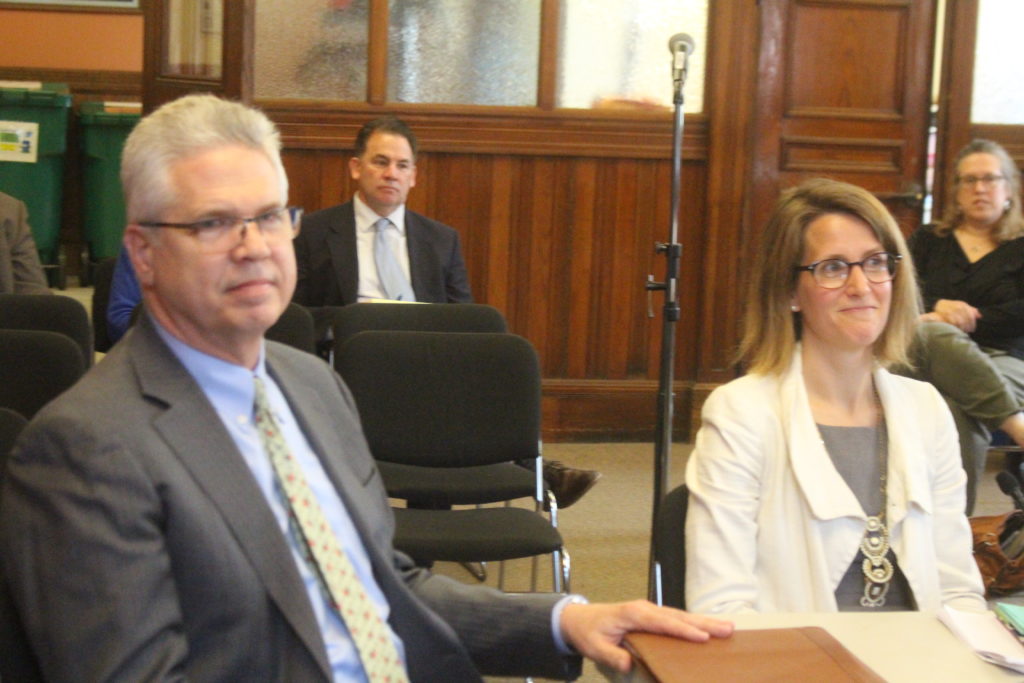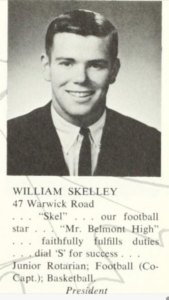Photo: Jill Norton of the Belmont School Committee.
It was a political gesture that’s hardly seen in an age of insulting opponents and demeaning the process.
A vote to fill the vacant seat on the Belmont School Committee by a joint meeting of the Belmont Board of Selectmen and the School Committee, on Friday, May 11, resulted in a four-to-four deadlock between Jill Norton and Michael Crowley, two of the four candidates seeking the position.
As the selectmen and committee were prepared for the second round of voting between the two, Crowley told the board he wished to “make things easy.”
“I appreciate that Jill got out and ran and I’ve talked to her a number of times … and she would do a fabulous job on the school committee,” as he graciously step aside, withdrawing his nomination to allow Norton, who unsuccessfully ran for a term on the committee, to serve the remaining two years of Thomas Caputo’s term after he was elected to the Board of Selectmen in April.
- Michael Crowley (left) with Jill Norton after he stepped aside to allow Norton to become a member of the Belmont School Committee.
The act caught the boards and residents by surprise as the Clark Street resident was unanimously approved by the board.
Crowley said his decision was not due to any sense of doing “the honorable thing.”
“I like [Norton] and it felt right,” said the Warrant Committee member. “I didn’t want to see any quibbling or arguing which I did see any benefit in that.”
For Norton, Crowley’s reaction thwarted her own thoughts of ceding her votes to her opponent.
“It’s funny because I potentially was thinking of doing the same thing Michael did but he got there first,” she said, noting a financial background is important as the schools make up nearly half of the town’s annual budget.
The closeness of the vote showed the group were of two minds on the skills the School Committee would need in the coming years. The first four votes were for Crowley, emphasizing his budgetary and financial background as well as his membership on the town’s financial watchdog agency.
“There’s sort of a void in that hardcore, number crunching [skill set],” said Adam Dash, selectmen chair.
Norton, who received the final four votes, was seen bringing a policy approach while each of members who selected her said she deserved credit for stepping up and running a good campaign and were vetted by the voters.
“I do give a lot of credit who put themselves out there for the election,” said Susan Burgess-Cox, chair of the School Committee.
But the differences were made mute when Crowley abandoned the race.
As for the newest member, Norton has experience on the policy side of the education field. For the past two years, Norton has worked as Director of Education Policy at Cambridge-based Abt Associates, to help develop and execute a strategy for the firm’s Education Practice. Previously, she was a Senior Policy Adviser for the state’s Executive Office of Education and Executive Director of the Rennie Center for Education Research & Policy, a Cambridge-based think tank, having started her career as a classroom teacher.
Norton matriculated at Michigan State University where she earned a BA in Elementary Education and received her Master’s in Education from Harvard. A 16 year Belmont resident, her oldest child attends Belmont’s public school.
Norton told the Belmontonian that her priority is to listen to the constituencies – teachers, students, parents, and administrators – within the districts before she brings proposals before the committee, “and is there any possible connection between our needs and funding and grant opportunities that the governor’s office is considering.”
Norton said her family’s involvement with the cadre of educators teaching her son as well as her background in the classroom “intensifies my inclination to connect with teachers and support all the good work that they are doing and do whatever I can because that’s where the rubber meets the road.”

